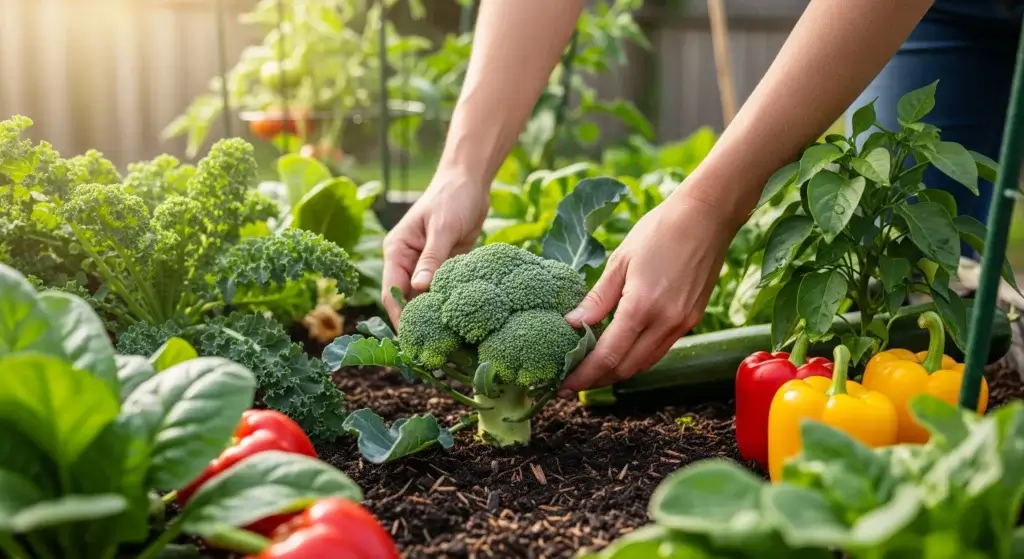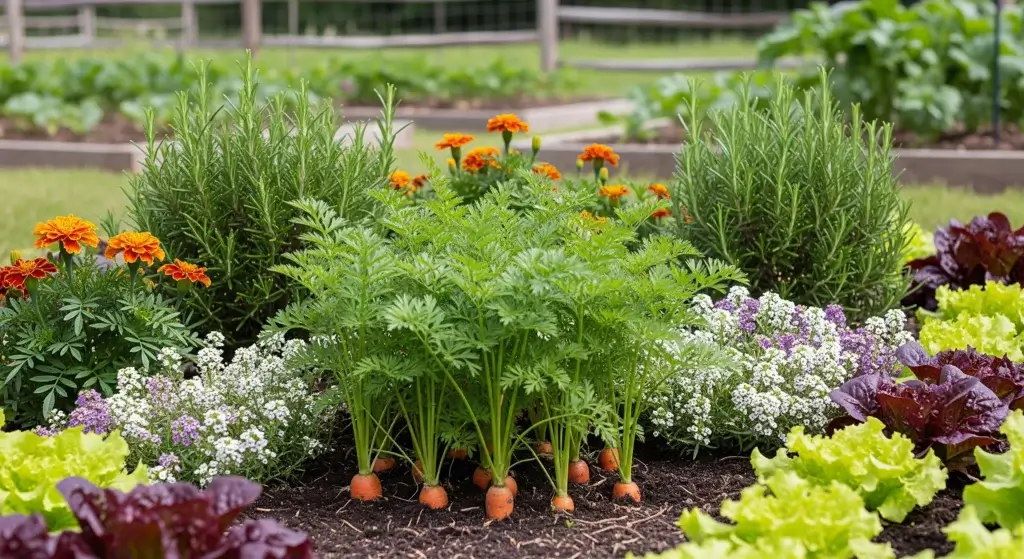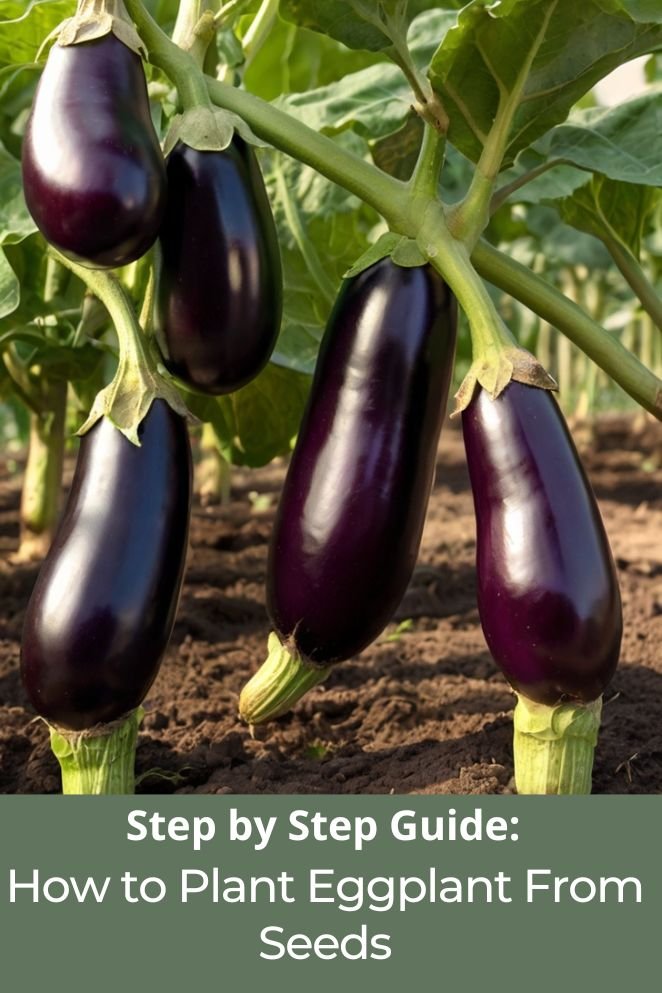
Eggplants (or aubergines) are a warm-season crop that thrives in hot climates.
It’s important to understand the key steps and conditions required to grow them successfully.
Like all plants, they have specific needs to grow and produce the best harvest.
We’ll walk you through everything you need to know about planting eggplant seeds, from starting indoors to transplanting and caring for your plants until they’re ready to harvest.
Ideal Conditions for Eggplant Plants
Eggplant, scientifically known as Solanum melongena, thrives under specific environmental conditions that promote healthy growth and fruit production.
Here are the essential factors to consider for optimal eggplant cultivation.
Temperature
- Optimum growing temperature: Eggplants prefer warm to hot climates, with ideal temperatures ranging from 70°F to 90°F (21°C to 32°C) for growth and fruit development.
- Soil temperature: A soil temperature of at least 70°F is necessary for seed germination and root development.
Sunlight
- Light requirements: Eggplants require full sun exposure, ideally receiving 12 to 14 hours of bright light daily. This ensures robust growth and prevents leggy plants.
Soil conditions
- Soil type: Fertile, well-drained soil is crucial. Eggplants thrive in sandy loam or loamy soils enriched with organic matter like compost.
- pH level: The optimal soil pH for eggplants is between 5.5 and 7.5, which supports nutrient availability.
- Soil preparation: Prior to planting, amend the soil with compost or well-rotted manure to enhance fertility and drainage.
Watering
- Irrigation needs: Eggplants require consistent moisture, needing about 1 to 2 inches of water per week. Deep watering is preferred over frequent shallow watering to encourage strong root systems.
- Mulching: While mulch can help retain moisture, it should not be applied until the soil temperature is sufficiently warm (above 75°F) to avoid cooling the roots.
Fertilization
- Nutrient requirements: Eggplants benefit from fertilizers high in phosphorus and potassium but lower in nitrogen to prevent excessive leaf growth at the expense of fruit production. A balanced fertilizer like a 10-10-10 formulation is often recommended.
- Application timing: Fertilize during planting and side-dress with nitrogen fertilizer at intervals (typically at 4 and 8 weeks post-transplant) to support growth without promoting too much foliage
Protection from cold
- Eggplants are sensitive to cold: thus, using row covers or black plastic mulch can help warm the soil and protect young plants from unexpected cool weather
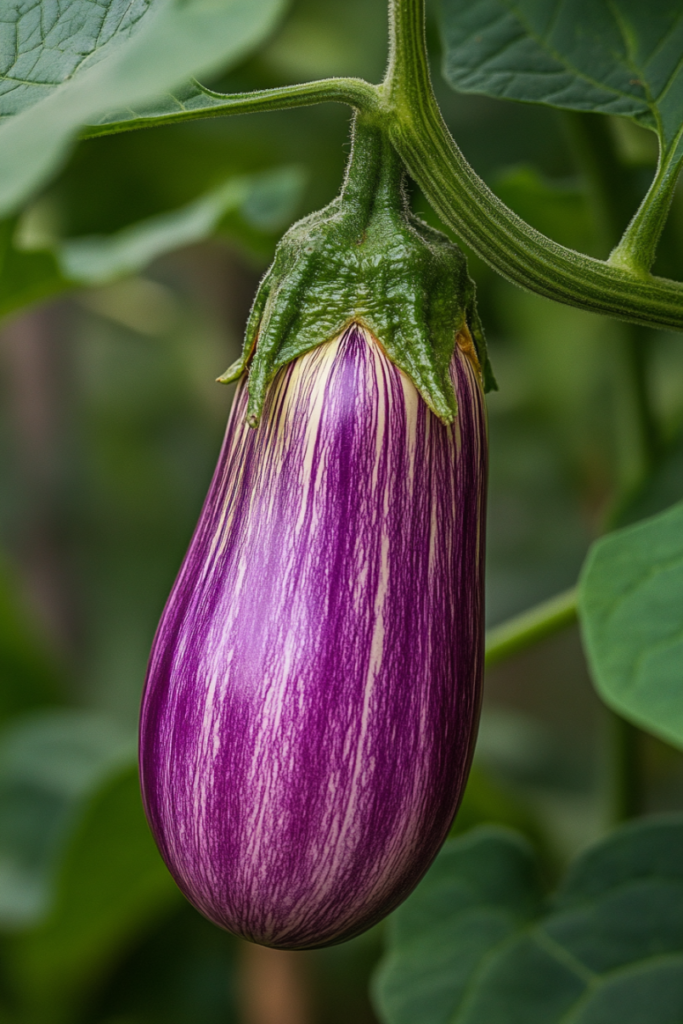
Choosing the Right Eggplant Variety
Choosing the right eggplant variety involves considering several factors, including climate, culinary uses, and available space.
Here’s a guide to help you select the best eggplant variety for your needs. Key factors to consider:
- Growing environment: Eggplants thrive in warm conditions, preferring temperatures between 70°F and 90°F. Choose varieties that are suited to your local climate and growing season. Consider how much space you have for planting. Some varieties grow larger than others and may require more room.
- Culinary uses: Different eggplant varieties have unique flavors and textures that make them suitable for specific dishes. Here are some popular varieties along with their culinary applications:
| Variety | Description | Culinary uses |
| Black Beauty | Classic variety with dark purple skin, firm texture. |
Ideal for grilling, frying, and baking.
|
| Japanese Eggplant | Long, slender shape with a mild flavor and creamy texture. | Great for stir-fries, tempura, and miso dishes. |
| Rosa Bianca | Round shape with lavender skin; creamy flesh with delicate flavor. | Excellent for grilling and roasting. |
| Italian Eggplant | Medium to large size, oval shape; slightly bitter flavor. | Used in Italian dishes like eggplant parmesan. |
| Fairy Tale | Small, sweet-tasting variety; perfect for small gardens. | Versatile; can be used in various recipes. |
| Chinese Eggplant | Long and slender with a light purple hue; tender texture. | Common in Asian cuisine; excellent for stir-frying. |
| Turkish Delight | Deep purple color; small seed cavity; productive and sturdy plant. | Good for sautéing or grilling. |
| Sicilian Eggplant | Bulbous shape with deep purple skin; absorbs flavors well during cooking. | Used in caponata and other Mediterranean dishes. |
- Seed availability: Check local garden centers or online suppliers for seed availability of your chosen varieties. Some may be more readily available than others.
- Personal preference: Taste preferences vary; consider trying different varieties to find which ones you enjoy the most.
- Growing challenges: Some varieties may be more resistant to pests or diseases, making them easier to grow in certain conditions.
Preparing for Planting
To ensure successful germination, preparation is key. Here’s what you’ll need to do:
- Choose the right time: Eggplant seeds should be started indoors about 8-10 weeks before the last expected frost date in your area. This gives them enough time to establish before moving outdoors.
- Gather supplies: You’ll need seed trays, a high-quality seed-starting mix, and a warm, sunny spot or grow lights to help your seeds sprout.
Make sure your workspace is clean and organized, and your seed trays are sterilized to prevent any disease from affecting your seeds.

Starting Eggplant Seeds Indoors
Starting seeds indoors is one of the most critical steps. Here’s how to do it:
Step 1: Fill your seed trays
Use a well-draining seed-starting mix to fill your trays.
Regular garden soil is too dense for seedlings.
Step 2: Plant the seeds
Place the seeds about ¼ inch deep in the soil, and lightly cover them with the seed-starting mix.
Step 3: Water gently
Water the soil lightly but consistently to keep it moist.
Use a spray bottle to avoid disturbing the seeds.
Step 4: Provide warmth
Eggplant seeds need warmth to germinate.
Keep the trays in a location with a temperature of about 75°F (24°C).
You can use a seedling heat mat if needed.
Step 5: Provide light
If you don’t have a sunny window, use grow lights to provide about 12-14 hours of light per day.
Seedlings will grow tall and leggy without enough light.
Step 6: Caring for germination
Eggplant seeds typically germinate in 7-14 days.
Once they sprout, continue to water them lightly and ensure they have plenty of light.
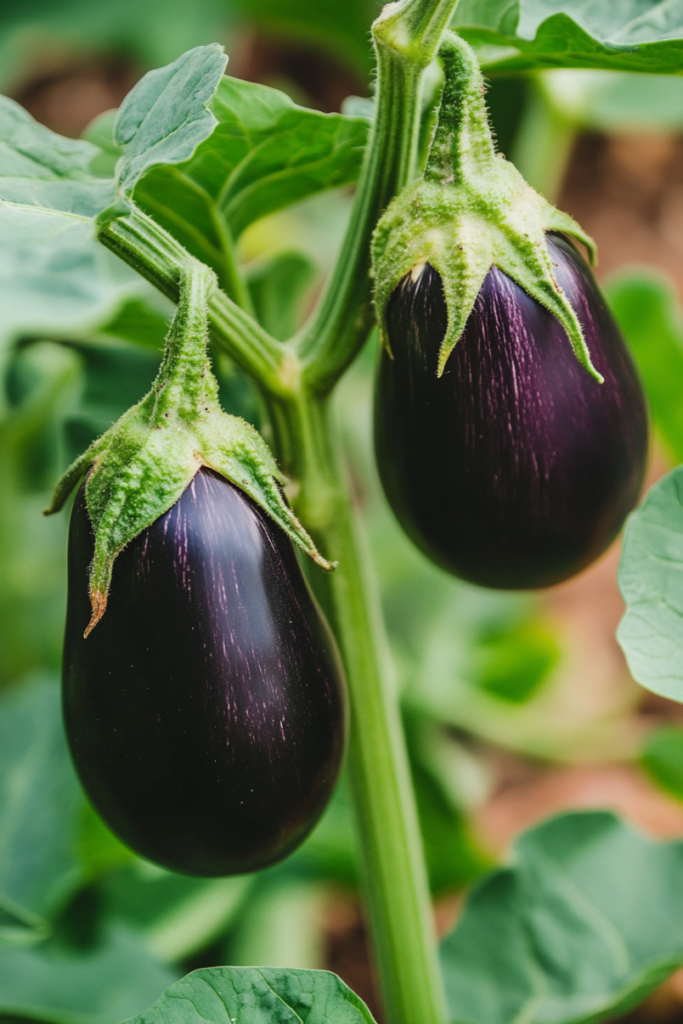
Transplanting Eggplant Seedlings
Once your seedlings have grown and the weather has warmed up, it’s time to move them outdoors.
Here’s how:
Step 1: Harden off the seedlings
About a week before transplanting, start introducing your seedlings to outdoor conditions gradually.
Place them outside for a few hours each day, increasing the time daily.
Step 2: Prepare the garden bed
Loosen the soil and mix in organic compost or fertilizer.
Eggplants are heavy feeders and benefit from nutrient-rich soil.
Step 3: Space the seedlings
Space each plant about 18-24 inches apart to give them room to grow.
Rows should be about 30-36 inches apart.
Step 4: Plant deeply
Transplant the seedlings into the soil at the same depth they were growing in their trays.
Gently firm the soil around the roots and water them well.
Step 5: Mulching (Optional)
Adding mulch around the plants can help retain soil moisture and prevent weeds from taking over.
Caring for Eggplant Plants
Once you’ve planted your eggplant seedlings, it’s essential to provide them with proper care to ensure healthy growth and a bountiful harvest.
Caring for eggplants is straightforward if you follow these tips:
- Water regularly: Eggplants need consistent moisture but don’t overwater. Aim for about 1-2 inches of water per week.
- Fertilize: Use a balanced fertilizer every two weeks during the growing season. Eggplants are heavy feeders, so regular feeding will help them thrive.
- Support the plants: As eggplants grow, their heavy fruits can weigh the plants down. Use stakes or tomato cages to support the stems and prevent them from breaking.
- Watch for pests: Common eggplant pests include aphids, flea beetles, and spider mites. Regularly check your plants and use organic insecticidal soap or neem oil if needed.
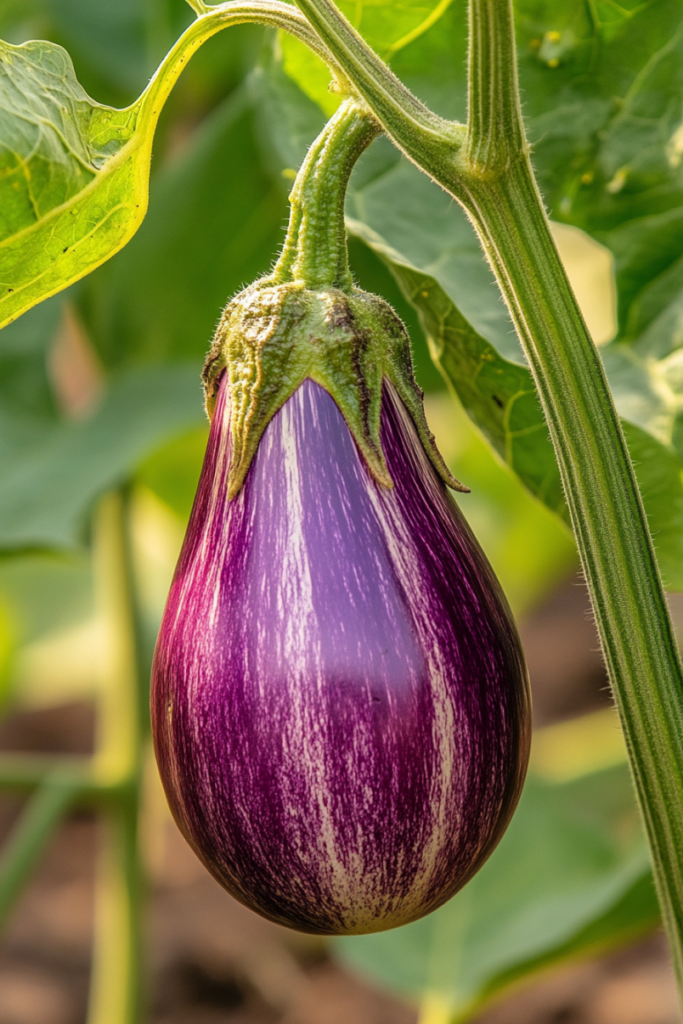
Harvesting Eggplants
When your eggplants are firm and shiny, they’re ready to be harvested. Here’s what to look for:
- Size: Eggplants are usually harvested when they reach about 6-8 inches in length, but this can vary depending on the variety.
- Glossy skin: A ripe eggplant will have smooth, shiny skin. If the skin becomes dull, it may be overripe and bitter.
- Check for firmness: Gently press the fruit with your thumb. If it springs back, it’s ready to be picked. Use pruning shears to cut the eggplant from the plant, leaving a small stem attached.
Conclusion
Planting eggplant seeds can be a rewarding experience, providing you with a fresh and flavorful harvest.
By following these steps, you can successfully cultivate healthy eggplant plants and enjoy the fruits of your labor.
Remember to choose the right eggplant variety for your climate, prepare your planting area adequately, and provide your plants with the necessary care, including regular watering, fertilization, and pest control.
With a little attention and effort, you’ll be enjoying homegrown eggplants in no time.

